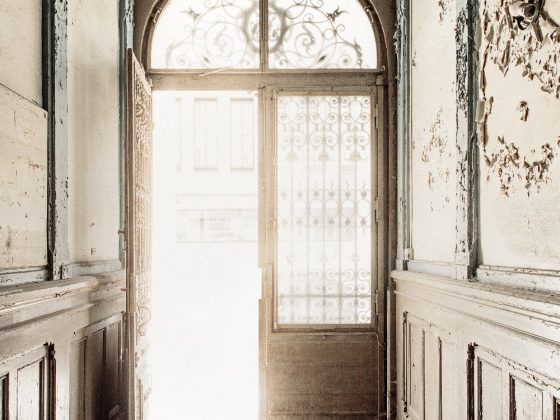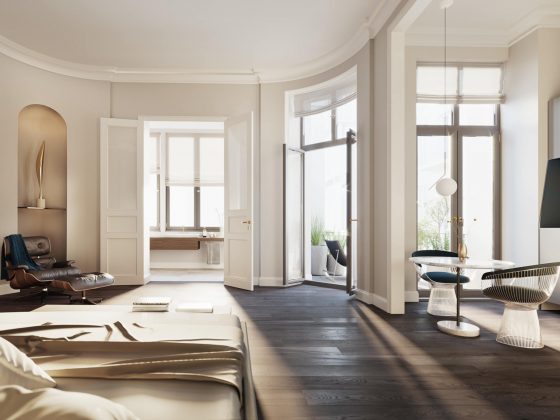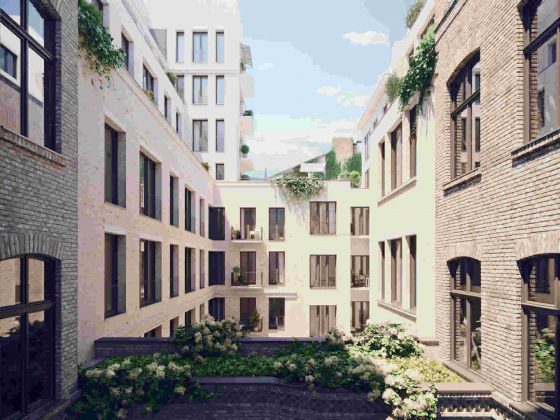The GLINT ensemble in Berlin translates the historical into the modern. This is done by combining the most beautiful features of a Wilhelminian style building with the amenities of a new home. Here you can find out how this exciting synthesis works in practice and which advantages you can expect as a GLINT resident in Berlin-Mitte.
The benefits of diverse construction methods
The term “Altbau” usually refers to buildings that pre-date the Second World War. Typical of this type of construction is the use of masonry walls, timber ceilings and double windows. Newer buildings, such as those built in Germany since 1949, are characterised by concrete walls and ceilings, as well as both laminated and insulated glass windows.
Both forms of construction have different advantages, which generally comes down to the individual taste of each resident. For example, many people think the features of old buildings as more aesthetically pleasing. The designs on the façade, the stucco features and the high ceilings create a very unique charm and conjure memories of past eras. On the other hand, the renovation options for older buildings are often limited and the thermal insulation less efficient, which can lead to higher heating costs.
Newer buildings, on the other hand, offer a very high degree of flexibility – ideal for residents who have precise ideas about their future home. The floor plan can be designed on an individual basis. Custom items such as an open kitchen, an accessible living room or a bathroom with an extra-large bathtub can be easily added. As modern building materials are used, the insulation is significantly better than in old buildings. Additionally, Smart Home technologies, which allow your home to be networked and controlled via smartphone or tablet, are more easily introduced in new buildings.
GLINT makes your decision easy: the best of classic and modern architectural elements are combined to form a harmonious whole. Essentially, you get the best of both worlds.
How GLINT achieves style synthesis
Built between 1873 and 1886, GLINT’s four buildings form a true Berlin Wilhelminian ensemble. The cast-iron decorations on the entrance gates are proof of this. In addition, the beautiful entrance areas and the staircases reflect the building’s origins. Here visitors can expect old floor tiles, artistic ceiling ornaments and stylish bannisters. The concierge area in the stairwell is a unique, original feature from the building, which is an insight into the upper middle-class lifestyle of the time.
There are many old building fabrics that are worth preserving, which is why GLINT is listed as a building under heritage protection. This does not mean, however, that the new design should simply be an imitation. Instead, historical elements are revised and reinterpreted. This modernisation affects, for example, the design of the facade. The original structuring elements such as cornices or wall panels are preserved, but redesigned in a contemporary way. Because the façade was stuccoed after the Second World War, a clear plaster structure on the street side is used to revamp it. Perhaps the best example of the synthesis of old and new is the original tower of the corner building. Destroyed in the Second World War, it will celebrate its resurrection with the renovation of GLINT – this time, however, in a modern, simplified look, with a sculptural spiral staircase inside. The glass dome offers residents and visitors a unique 360-degree view of the Reichstag, the Gendarmenmarkt and the Großer Tiergarten.
Inside the apartments, a modern, flowing room concept awaits you – including connecting the bathroom to the bedroom and by using glass walls and doors. In some cases, however, GLINT also makes use of old building features here, for example, by incorporating existing hinged doors and reinterpreting them in a glass variation. Other classic elements like the beautiful oak floors are also featured. At the same time, the residents enjoy the numerous comforts of a new building: spa areas, fireplaces, air conditioning systems and underground car parks with elevators. And thanks to the latest Smart Home technology, you can conveniently control your sunroof, blinds and heating system via tablet or smartphone.
The existing complex is harmoniously revitalised through a new construction. Here you can enjoy all the advantages of newer building features without missing out on that inimitable GLINT style. The new building guarantees rooms flooded with light thanks to large, floor-to-ceiling windows. In addition, this part of the Wilhelminian style building offers particularly high energy efficiency and thus supports the sustainability concept in GLINT.
There is also an important special feature of rooftop apartments in GLINT. In contrast to many classic buildings, you have extreme flexibility when it comes to the floor plan. Together with our architects you can create your own personal design. The total size can be extended up to 600 sqm without any problems. Furthermore, through the use of large-scale studio glazing in the steep roof areas and in the restoration of the dormers, some of which are five metres high, the outer shape of the complex is also preserved and reinforced, as according to heritage protection standards. With this, GLINT consistently closes the gap between old and new.
Experience the best of both worlds
As a resident in GLINT, you don’t have to miss out on anything – old and new buildings form a perfect symbiosis. When you enter the building, you discover the charm of a historic residential environment, which flows through the bay windows, high ceilings and wooden floors. At the same time, you will enjoy all the amenities of a new building such as the modern floor plan design, the open space concept and the use of innovative materials and technology. GLINT revitalises the historical into the modern for you.



